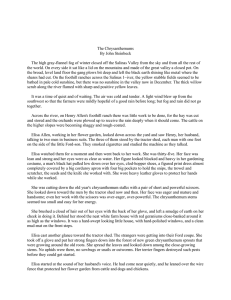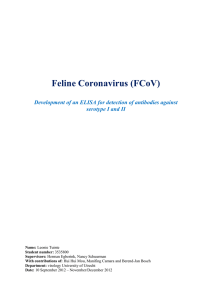“The Chrysanthemums” Sample Answer
advertisement
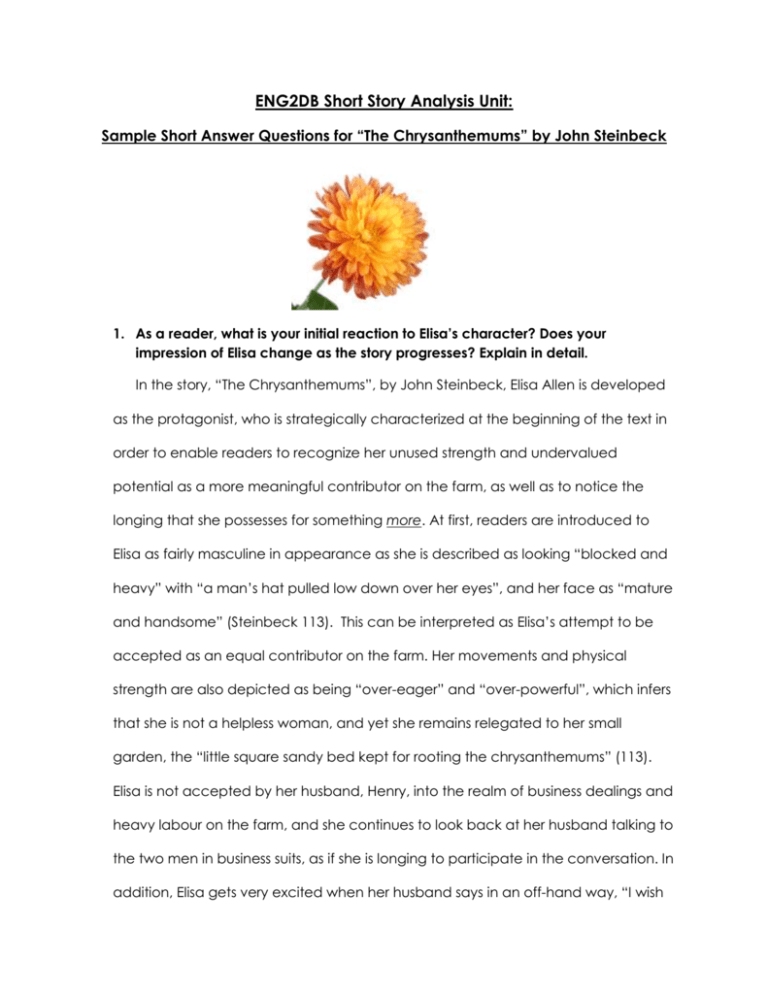
ENG2DB Short Story Analysis Unit: Sample Short Answer Questions for “The Chrysanthemums” by John Steinbeck 1. As a reader, what is your initial reaction to Elisa’s character? Does your impression of Elisa change as the story progresses? Explain in detail. In the story, “The Chrysanthemums”, by John Steinbeck, Elisa Allen is developed as the protagonist, who is strategically characterized at the beginning of the text in order to enable readers to recognize her unused strength and undervalued potential as a more meaningful contributor on the farm, as well as to notice the longing that she possesses for something more. At first, readers are introduced to Elisa as fairly masculine in appearance as she is described as looking “blocked and heavy” with “a man’s hat pulled low down over her eyes”, and her face as “mature and handsome” (Steinbeck 113). This can be interpreted as Elisa’s attempt to be accepted as an equal contributor on the farm. Her movements and physical strength are also depicted as being “over-eager” and “over-powerful”, which infers that she is not a helpless woman, and yet she remains relegated to her small garden, the “little square sandy bed kept for rooting the chrysanthemums” (113). Elisa is not accepted by her husband, Henry, into the realm of business dealings and heavy labour on the farm, and she continues to look back at her husband talking to the two men in business suits, as if she is longing to participate in the conversation. In addition, Elisa gets very excited when her husband says in an off-hand way, “I wish you’d work out in the orchard and raise some apples that big”, but then brushes off her resulting eagerness when he says, “Well, it sure works with flowers” (114). Henry’s response seems to once again devalue Elisa’s potential, and unfairly demote her to a small patch of land for ‘women’s work’, a seemingly insignificant place to grow flowers that are pretty to look at, but hold little value. This is similar to how women were thought to be a ‘decorative sex’ who were often seen, but not heard. However, the interesting thing is that Elisa’s chrysanthemums are not just beautiful, but instead, they are also tall and strong, not unlike Elisa’s herself, which is important to an analysis of symbolism in the story. It can be argued that Elisa proves to be a dynamic character in this story after she does business with the manipulative peddler, and through this transaction she seems to gain a sense of empowerment, even though it is undeniable that she still longs for freedom beyond what her sex/gender and daily routine will allow. This is proven effectively when she says to the peddler, “You might be surprised to have a rival some time….I could show you what a woman might do” (119). In this moment, she seems to feel like she matters, and that her future holds something more than only growing chrysanthemums on the farm. After her interaction with the peddler, she even tears off her “battered hat” and she puts on a dress that is the “symbol of her prettiness”, all the while stating to her husband confidently that she is strong, saying, “I’m strong. I never knew how strong before” (117, 120). Consequently, Elisa seems to recognize her strength while still being able to look feminine. Unfortunately, however, this change in Elisa’s character seems to be brief once her confidence is dashed at the end of the story when she sees the chrysanthemums that she gave to the peddler lying in the middle of the road, forgotten and valueless. As a result, she seems to resign herself to her powerless position as a woman, saying to her husband, “It will be enough if we can have wine”, and she is also left “crying weakly – like an old woman” (121). Finally, Elisa is portrayed as strong and determined at the beginning of the story, but through its progression, she is reduced to nothing more than a weak, old woman who must give in to the confines of her sex/gender.
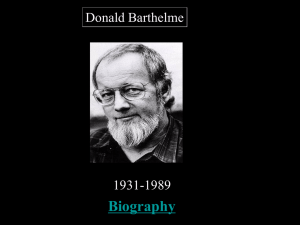
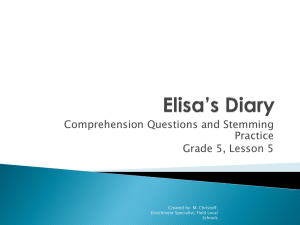
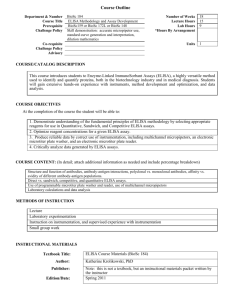

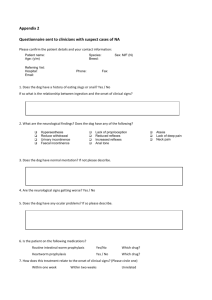

![[Last Name] [Last Name] [Your Name] [Instructor Name] [Course](http://s2.studylib.net/store/data/010002471_1-c91dfe88e44d1b7f9918006d51a9c838-300x300.png)
